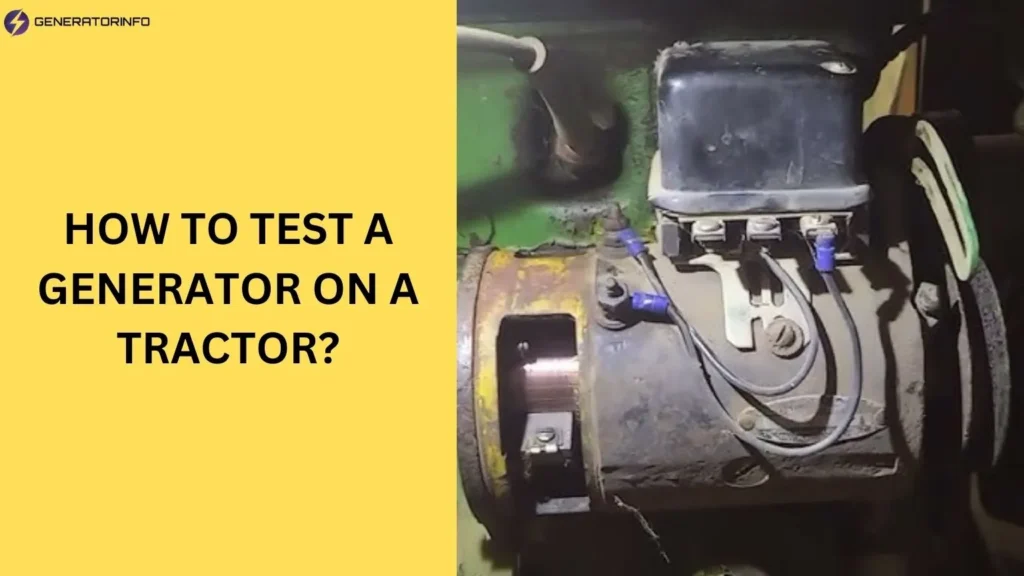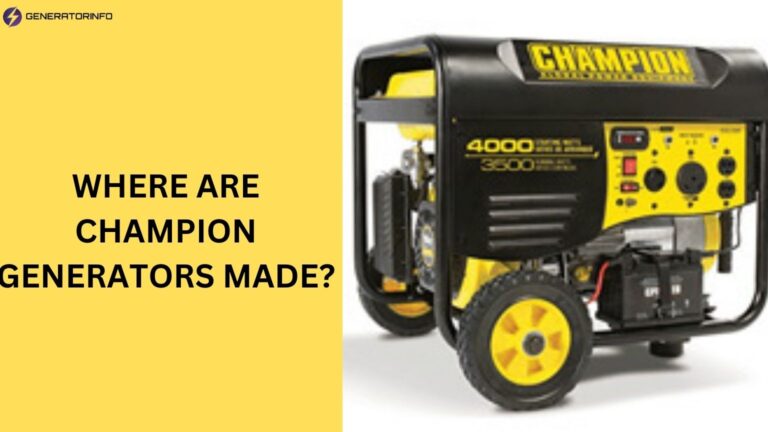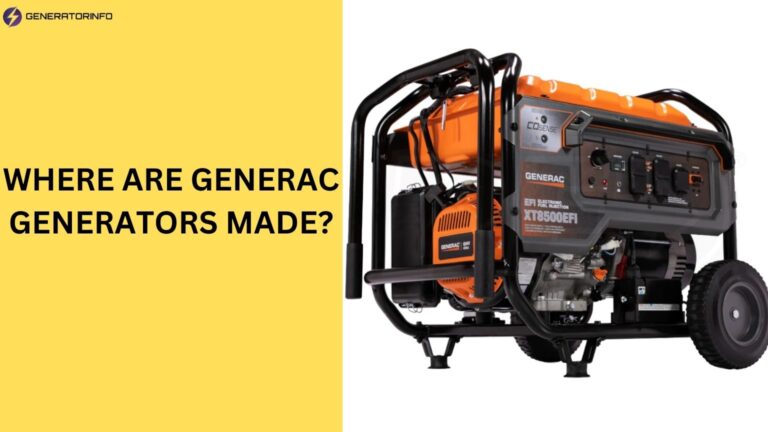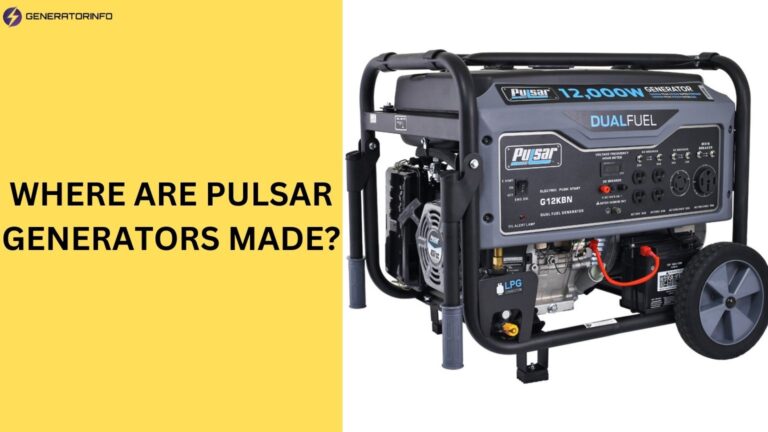How to Test a Generator on a Tractor? (Guide) 2025
How to Test a Generator on a Tractor? Testing a generator on a tractor is essential for ensuring your equipment runs smoothly and efficiently.
A properly functioning generator provides the necessary electrical power for starting the tractor and operating its various systems.
This guide will help you understand how to effectively test a generator on a tractor, from preparation to troubleshooting.

Understanding the Importance of Generator Testing
Before diving into the testing process, it’s crucial to understand why testing a generator is necessary. A malfunctioning generator can lead to various issues, including:
- Starting Problems: Difficulty in starting the tractor due to insufficient electrical power.
- Operational Failures: Inability to power essential systems, such as lights or hydraulic systems.
- Increased Wear: Strain on the tractor’s battery and other electrical components, leading to premature failure.
Preparing for the Test
Gather Necessary Tools
Before testing the generator, gather the following tools and materials:
- Multimeter: For measuring voltage and electrical continuity.
- Battery Tester: To check the health of the battery.
- Wrench Set: For loosening and tightening connections.
- Safety Gear: Gloves and safety glasses to protect yourself during the process.
Safety Precautions
Always prioritize safety when working with electrical components. Follow these precautions:
- Disconnect the battery before beginning any work on the generator.
- Wear appropriate safety gear to protect your eyes and hands.
- Ensure the tractor is on a flat surface to prevent any accidents.
Step-by-Step Guide on How to Test a Generator on a Tractor
Step 1: Inspect the Generator
Before using a multimeter, visually inspect the generator for any obvious issues. Look for:
- Loose Connections: Check all wiring and connectors for tightness.
- Physical Damage: Look for cracks or signs of wear.
- Corrosion: Inspect terminals for rust or corrosion.
Step 2: Test the Battery
A weak battery can often mimic generator problems. Use a battery tester to check the voltage:
- Normal Voltage: A healthy battery should read around 12.6 volts when fully charged.
- Low Voltage: If the battery reads below 12 volts, it may need charging or replacement.
Step 3: Use a Multimeter to Test Voltage Output
To assess the generator’s performance, you’ll need to measure its voltage output. Here’s how:
- Reconnect the Battery: Once you’ve inspected and tested, reconnect the battery.
- Start the Tractor: Start the engine to allow the generator to operate.
- Set the Multimeter: Set your multimeter to the DC voltage setting.
- Measure the Output: Place the multimeter probes on the generator’s output terminals:
- Expected Voltage: You should see a voltage reading between 13.5 to 14.5 volts.
- Low Output: If the output is below this range, the generator may be faulty.
Step 4: Test Under Load
Testing the generator under load provides a more accurate assessment of its functionality:
- Connect a Load: Attach a load, such as a set of work lights or other electrical equipment.
- Measure Voltage Again: While the load is connected, repeat the voltage test with your multimeter:
- Stable Voltage: The voltage should remain within the normal range (13.5 to 14.5 volts).
- Voltage Drop: If you notice a significant drop in voltage, the generator may not be able to handle the load.
Troubleshooting Common Issues
If your tests reveal that the generator is not functioning correctly, consider these troubleshooting tips:
Generator Fails to Start
- Check the Fuel Supply: Ensure that there is enough fuel in the tank.
- Inspect Electrical Connections: Make sure all connections are tight and free from corrosion.
Voltage Output is Low
- Regulator Issues: A faulty voltage regulator can cause low output. Replace it if necessary.
- Worn Brushes: Check the brushes in the generator; if they are worn out, they may need replacing.
Intermittent Operation
- Loose Wiring: Inspect all wiring for any signs of wear or loose connections.
- Overheating: Ensure the generator is not overheating, as this can lead to performance issues.
People also ask
How do I know if my tractor generator is working?
To determine if your tractor’s generator is working, follow these simple steps:
Visual Inspection: Check for any obvious signs of damage or loose connections. Look for frayed wires or corrosion at terminals.
Start the Tractor: Turn on the engine and let it run for a few minutes.
Voltage Test: Use a multimeter to measure the voltage output at the generator terminals. You should see a reading between 13.5 to 14.5 volts. If it’s below this range, the generator may not be functioning properly.
Battery Check: Ensure the battery is fully charged, as a weak battery can affect generator performance. A healthy battery should read around 12.6 volts.
Load Test: Connect a load (like lights) to the generator and measure the voltage again. It should remain stable. A significant voltage drop indicates a problem.
How do you test if a generator is working?
To test if a generator is working, follow these quick steps:
Visual Inspection: Check for any visible damage, loose connections, or corrosion on terminals.
Start the Generator: Turn on the generator and let it run for a few minutes.
Voltage Measurement: Use a multimeter to measure the voltage at the output terminals. A functioning generator should read between 120 to 130 volts for standard models.
Load Test: Connect a load (like lights or tools) to the generator and observe if the voltage remains stable. Significant drops indicate problems.
Check Fuel and Oil Levels: Ensure there’s enough fuel and that oil levels are adequate, as low levels can affect performance.
How to test a 6 volt generator with a multimeter?
To test a 6-volt generator with a multimeter, follow these steps:
Prepare the Multimeter: Set your multimeter to the DC voltage setting and ensure it can measure at least 6 volts.
Connect the Multimeter:
Positive Probe: Connect the positive (red) probe to the generator’s positive output terminal.
Negative Probe: Connect the negative (black) probe to the generator’s negative output terminal.
Start the Generator: If the generator is mounted on a tractor, start the engine and let it run.
Measure Voltage: Observe the multimeter reading:
Normal Output: The reading should be between 6.5 to 7.5 volts.
Low Output: If it reads below 6 volts, the generator may not be functioning properly.
Check Under Load: If possible, connect a load to the generator and repeat the measurement. The voltage should remain stable and within the normal range.
How to do a load test on a generator?
To perform a load test on a generator, follow these simple steps:
Prepare the Equipment: Ensure you have a load bank or suitable electrical devices (like lights or tools) to connect to the generator.
Check Fluid Levels: Before starting, check the fuel and oil levels to ensure the generator is ready for operation.
Start the Generator: Turn on the generator and let it run for a few minutes to warm up.
Connect the Load: Gradually connect the load bank or devices to the generator. Avoid connecting all devices at once to prevent overloading.
Monitor Voltage and Frequency: Use a multimeter to measure voltage and frequency while the load is applied. Ensure the voltage stays within the specified range (e.g., 120-130 volts for standard generators).
Observe Performance: Listen for any unusual noises and check for overheating. The generator should run smoothly without significant voltage drops.
Disconnect the Load: After testing, gradually disconnect the load, allowing the generator to return to idle before turning it off.
Conclusion
How to Test a Generator on a Tractor? Testing a generator on a tractor is a straightforward process that can save you time and money by identifying potential issues early.
By following this guide, you can ensure your tractor’s generator is operating efficiently, keeping your equipment ready for any job.
Regular maintenance and testing will help you avoid unexpected breakdowns and prolong the life of your tractor.






